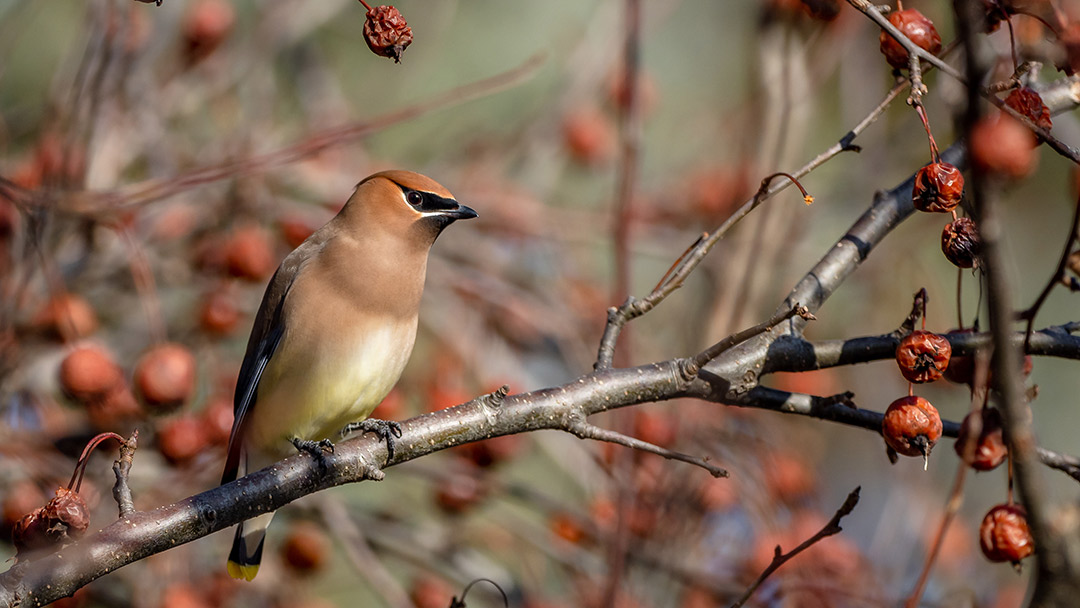
It’s February, and there’s about a foot of snow on the ground in our backyard. As I often do, I walked over to the large picture window in our house to see what wildlife is hanging out. Often there are deer, rabbits, squirrels, and a male and female cardinal. However, this time, I was pleasantly surprised by a “museum” or group of cedar waxwing perched in the crabapple tree.
Mixed in with the cedar waxwings were robins. I don’t usually see robins until spring arrives so I was surprised to see so many.
Identifying the Cedar Waxwing
The Cedar Waxwing is a medium-sized bird about 5.5-6.7 inches long. It has a large head with a crest that hangs over the back of the head and neck area. Its narrow black mask outlined in white around its eyes easily identifies it. Cedar Waxwings are overall pale brown in color, with gray wings that have a red waxy tip. However, some Cedar Waxwings do not have red tips, or they are hard to see. The belly of the bird is a pale yellow. The short tail is gray, squared off with a bright yellow tip.
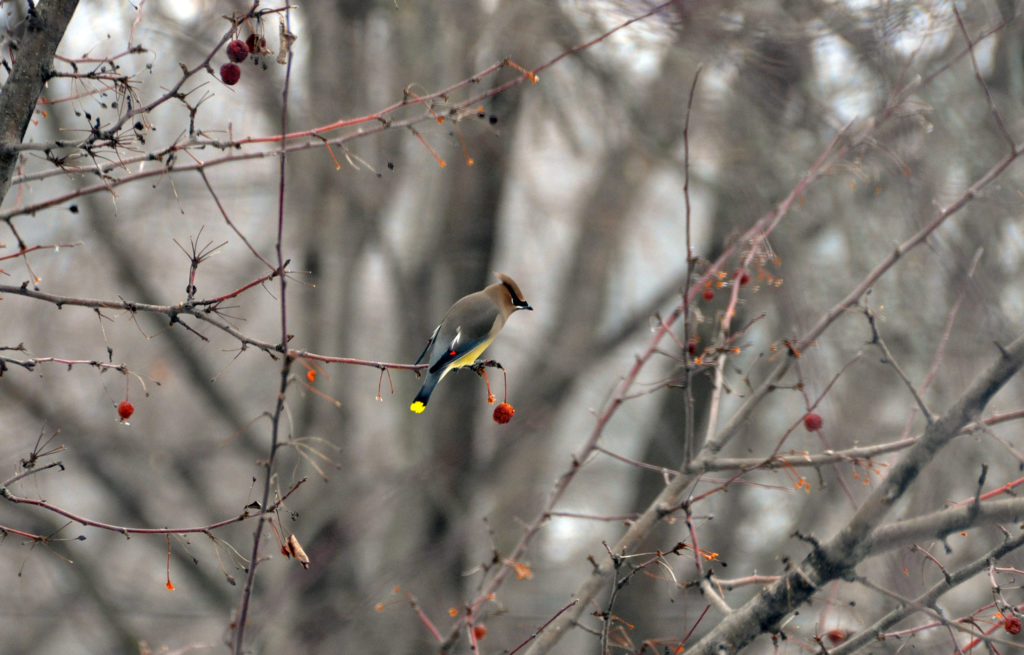
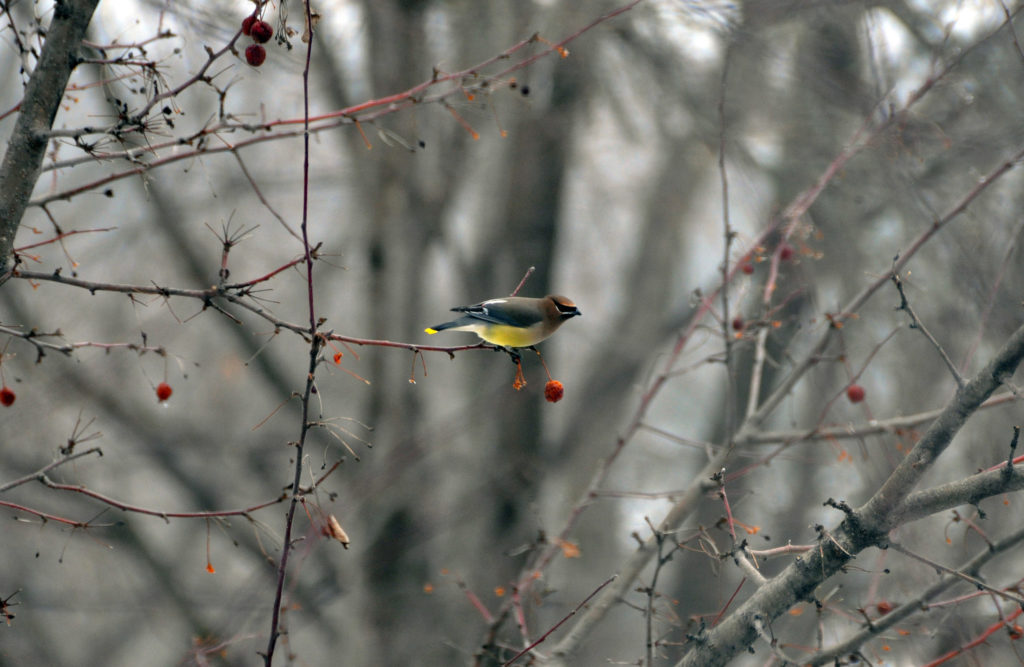
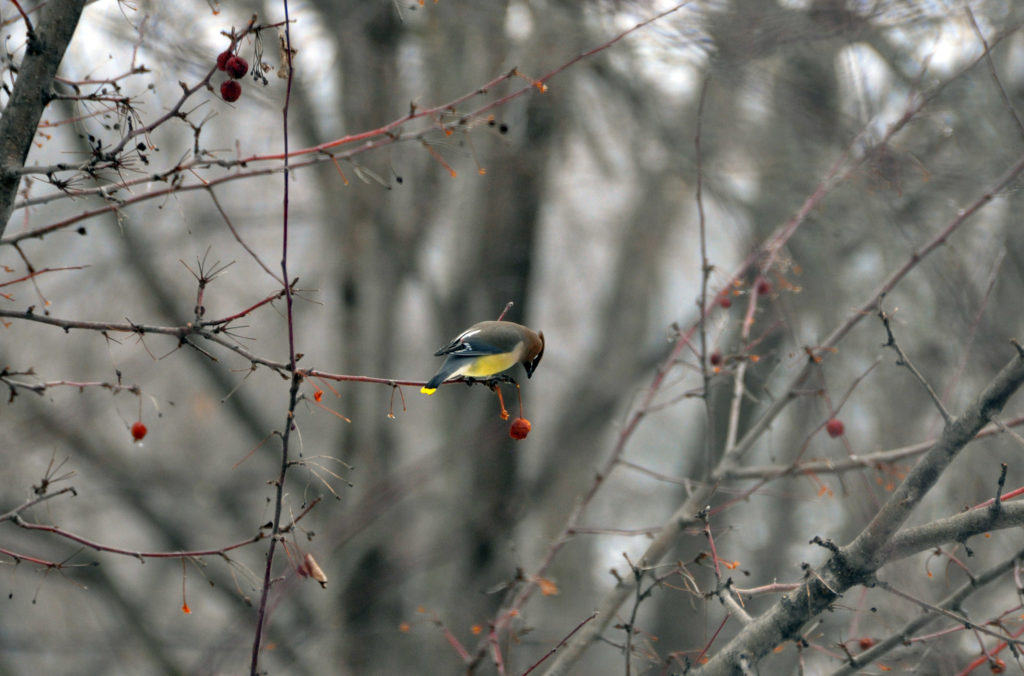
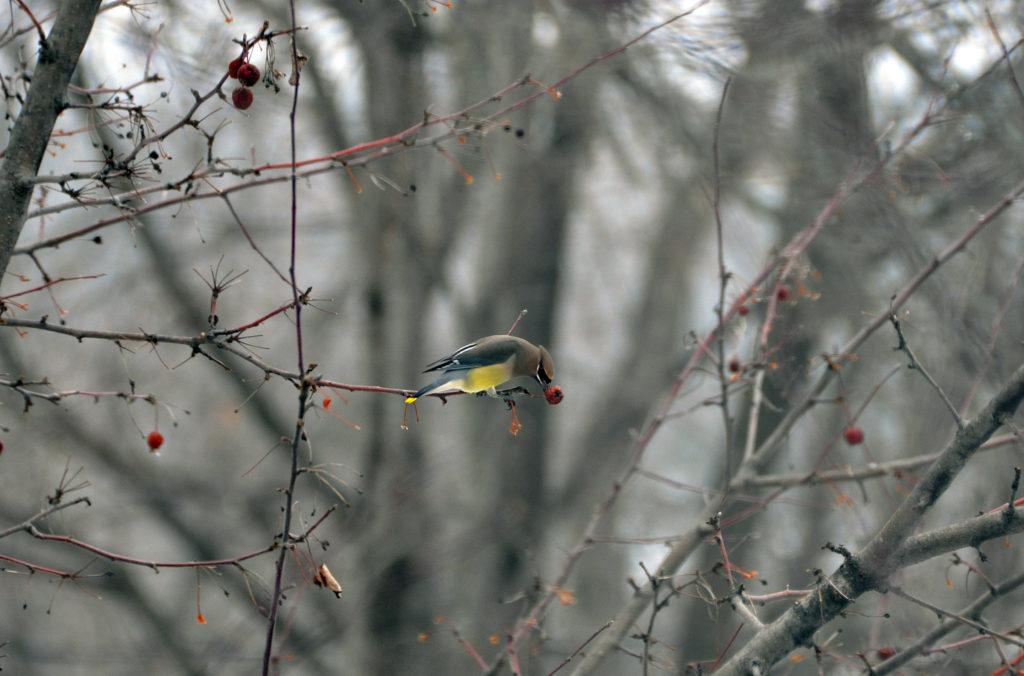
Cedar Waxwings love fruit! Often you will see multiple birds all sitting in berry trees, sometimes sharing the fruit. And believe it or not, they can get drunk from eating berries that have fermented. You can also find them flying over water, catching insects to eat. Their diet consists of fruit and berries and insects, such as caterpillars, ants, beetles, and more.

Are Cedar Waxwings songbirds & where do they live?
The Cedar Waxwing doesn’t really have a song but instead makes a quiet trilling or buzzing sound as it flies or rests in trees and bushes. They live in suburban areas, near wooded areas, and grasslands over much of North America. You’ll see them through the seasons in the upper 1/3rd of the United States. In the lower 2/3rds of the U.S. and Mexico in the winter and breeding and nesting mid-summer in Canada.
How many young do they have?
Typically these birds have about 3 to 5 pale gray eggs speckled with fine black/brown spots. The eggs hatch in about 12 days or so, and the young birds can leave the nest in about 14 days. Both the male and female forage for food to feed the young, hungry birds. They eat insects at first and then feed on berries as they get older.
A great source for more information
If you’d like more information about Cedar Waxwings or other birds, visit: https://www.birds.cornell.edu/home/
And be sure to check out other posts here or post your own photos, thoughts, and tips.

